The Generation of Maus’ Step-Siblings by Yuri Pasholok.
Nerfing KV-1: Weaker Doesn’t Mean Worse
KV-1 (Kliment Voroshilov) tank, 1939
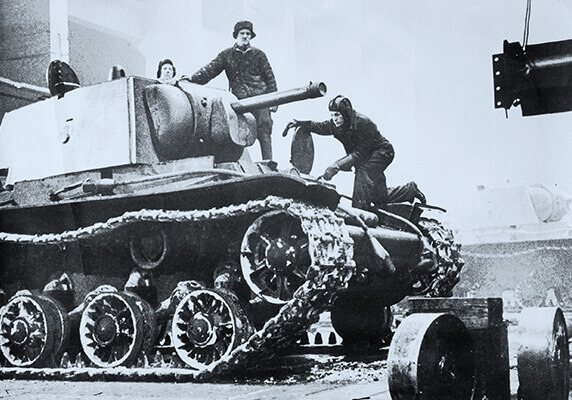
Initially, there was the KV-1 heavy tank, which was developed in a similar way to most vehicles of its type. The combat weight of the tank gradually increased: the first model weighed 40 tons, but by late 1941, the weight had risen to 50 tons. The armament and armored protection therefor became heavier. By 1942, it was planned to increase the engine capacity upwards of 700 horsepower and install an 85-mm (3.3-inch) gun. However, the increase in combat weight did more harm than good: the tanks began to experience critical transmission problems and dropped out of service by the dozens at the most inopportune moments.
In early spring of 1942, it was decided to slightly decrease the thickness of the armor to ensure the tanks were more reliable. However, it was not sufficient, and pretty soon the KV-1 was dramatically modified. In August, the new KV-1S heavy tank was tested, and a month later, it replaced its predecessor.
KV-1S tank
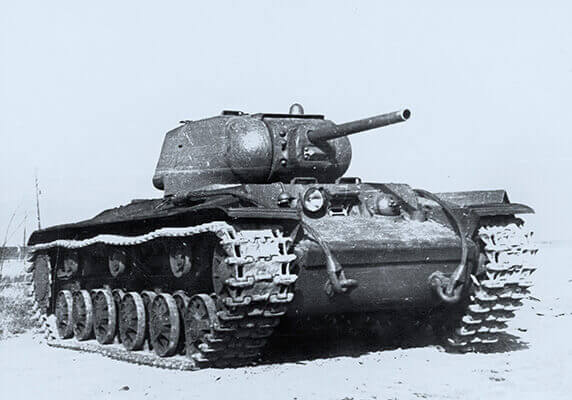
One heavy tank being replaced by another similar vehicle with inferior armor only happened once during World War II.
On the one hand, that decision seemed to be a step backward: starting from the spring of 1942, the German Army had tanks and anti-tank guns that could penetrate the KV-1's armor easily. The armor thickness of the KV-1S decreased from 95 mm to 75 mm (from 3.7 to 2.9 inch), and the sides became even thinner—60 mm (2.3 inch). On the other hand, the modified tank met the new requirements of the Soviet Army, according to which a tank should be able to quickly move to different locations at the front line. By decreasing the armor thickness and installing a new transmission, the designers not only increased the tank’s reliability, but its speed, too, which rose to 42 km/h (26 mph). In short, the decision to decrease armor thickness seemed to be the correct one for that time.
T26E4 Super Pershing: Front-line Modifications
In July 1944, the Allies encountered the most advanced German heavy tank: Pz.Kpfw. Tiger Ausf.B. Having studied wreckage of the tank, American military experts were at a loss. They found that no anti-tank or tank gun available at service could penetrate the front armor of the German tank.
They urgently started developing a more powerful gun for the medium tank T26.
Medium Tank T26E4 SuperPershing
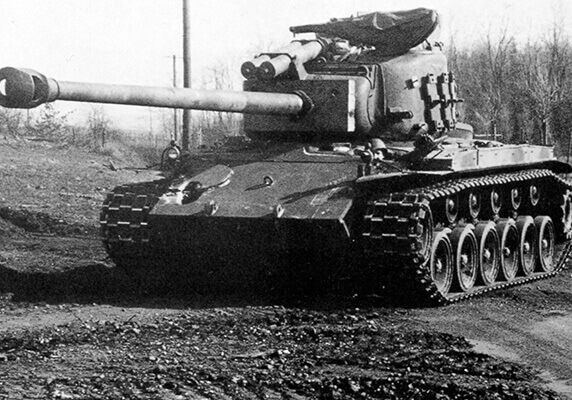
The first prototype of the T26E1 tank was used for testing a new 90-mm (3.5-inch) gun, which was named T15E1. The new gun was able to penetrate the front plate of the Panther from a distance of over two kilometers (1.2 mi) and the Tiger II from a distance of a few hundred meters. Initially, the new tank was named Medium Tank T26E1-1, but in March 1945, it was renamed Medium Tank T26E4.
The first model of the new tank was trialed in January 1945. Due to the more powerful gun, the mantlet was equipped with a balancing mechanism, which was fixed on top. The tail of the tank was equipped with a counterbalance. In March, the slightly modified tank was sent to Europe, where it entered into the service of the 3rd Armored Division.
The maintenance service of the Division made some changes to the appearance of the tanks: using abandoned Panther tanks as donors, they installed additional armor plates at the front of the hull and turret. These were supposed to be sufficient to withstand a direct shell hit from the Tiger II. In practice, however, it was never proven: while they were preparing for battle, the war ended. 25 T26E4 were produced, though they lacked the additional elements, and were designed simply as the first prototype.
The Panther tank on the Eastern Front, 1944
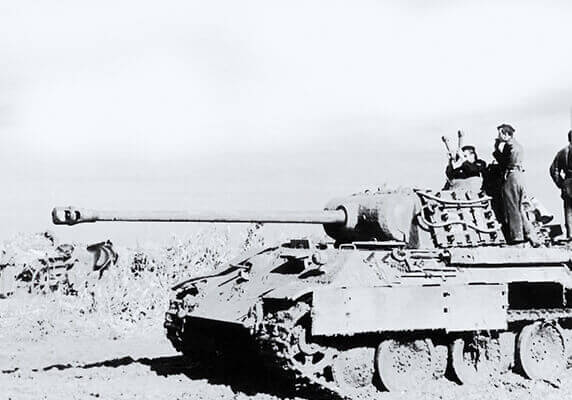
Sturer Emil: Size Matters
Sturer Emil
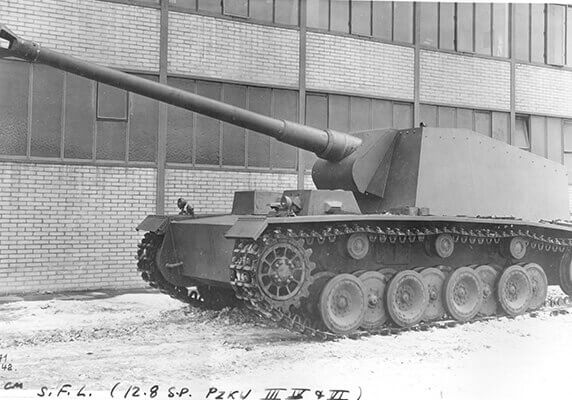
In 1939, German engineers began designing specialized self-propelled vehicles intended for destroying fortifications. One of those vehicles was a self-propelled gun, based on the advanced VK 30.01 (H) tank. The design work started in early 1940, and the development of the model started in April. By early 1942, the Rheinmetall-Borsig company constructed two pilot models, but by that time design work on the VK 30.01 (H) was stopped, and the vehicles were never put into production.
Sturer Emil
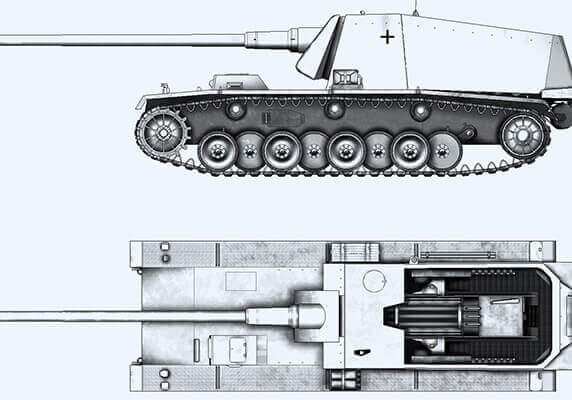
Despite such an inauspicious beginning, the future of these self-propelled guns turned out to be quite vigorous. At that moment in time, the task of fighting heavy tanks was given more priority than destroying enemy pillboxes. Pz.Sfl. für 12.8 cm K.40 (Sturer Emil), which was the new name for those vehicles, fitted that task perfectly. They were equipped with the Flak 40 anti-aircraft gun, which was the most powerful gun mounted on a powered chassis during World War II.
The German 128-mm (5-inch) Flak 40 anti-aircraft gun was the most powerful gun in its class during World War II. They were used mainly as stationary AA guns in Berlin. The only exception was the self-propelled gun “Sturer Emil”.
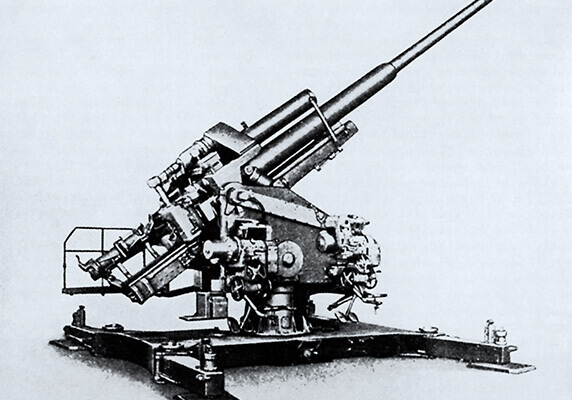
The vehicles were nicknamed “Sturer Emil” (German for “Stubborn Emil”). One vehicle was named Max and the other—Moritz. In May 1942, both vehicles entered service with Anti-Tank Battalion 521. They took active part in battle actions: in August 1942, Moritz had 31 kill marks painted on the barrel.
However, the vehicles had their drawbacks. They were too overloaded, which caused problems with their engines and chassis. The ammunition load, which amounted to only 15 rounds, was insufficient. Nonetheless, all those drawbacks were compensated by the most powerful gun with superb piercing performance.
Both vehicles suffered the fate of the 6th Army where they were enlisted. Max was destroyed in November 1942, during the Soviet counterattack that ended up surrounding Paulus’ army. Moritz was captured in January 1943.
German heavy SPG “Sturer Emil” based on the VK3001(H) chassis
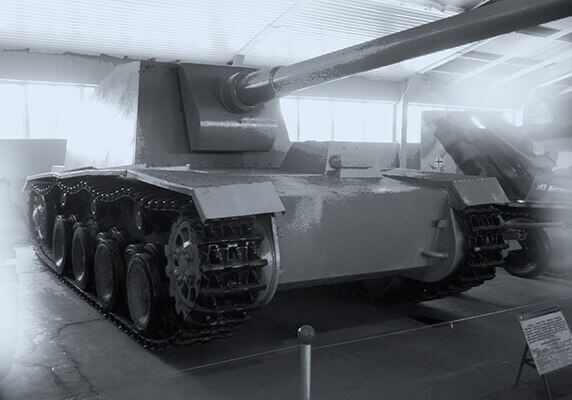
AMX 40: Restless Customer
French Tier IV AMX 40 light tank in World of Tanks. In real life, this vehicle existed only on paper
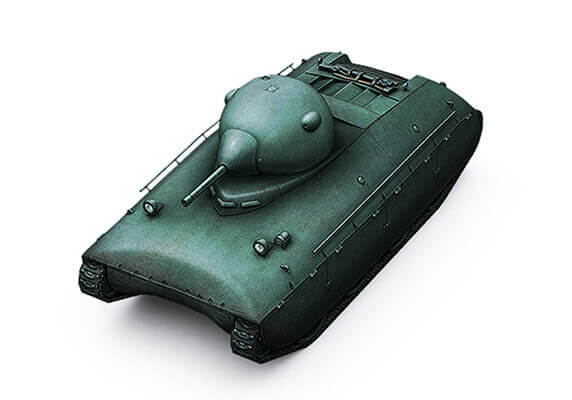
In 1936, the French Cavalry command wondered which tank would replace the Somua S35 that had just begun its service with the army. According to the requirements, the new Cavalry tank should weigh 20 tons, have 50-mm (2-inch) armor, be able to move at a maximum speed of 50 km/h (31 mph), and be equipped with a 47-mm (1.8-inch) gun.
The Somua company made the decision to upgrade the S35. As a result, they designed the S40 tank, which was never put into series production. In 1939, French designers saw the British Cruiser Tank Mk.III designed by John Walter Christie. It was a fast but rather expensive vehicle with bulletproof armor. However, the French liked the concept of the chassis.
In early 1940, the construction bureau Atelier de Construction d’Issy-les-Moulineaux (AMX), located in the south of Paris, started designing a cruiser tank with the Christie chassis. Joseph Molinié, the future chief designer at AMX who designed the most well-known French tanks in the post-war period, took charge of the design process. The task was difficult and required unusual solutions.
In March 1940, the AMX company presented a blueprint of a tank named Char de Cavalerie AMX 40. Except for the Christie chassis, the vehicle was quite French. Both the hull and the turret were cast. In terms of layout solutions, it was a typical French tank. To meet the technical requirements (which became stricter: the front armor needed to be 60 mm (2.3 inch) thick), the AMX 40 layout was pretty compact. Perhaps too compact: the turret race ring was less than one meter (three feet) in diameter, and the total width of the turret was 1.26 meters (4.1 feet).
The AMX 40 project did not proceed further than the technical design. Nonetheless, it went down in history as the most unusual tank based on the Christie chassis. This is a clear example of what military requirements may occur.
Heavy Assault Tank А39 Tortoise: The Birth of a Monster
British tank destroyer A.T.1
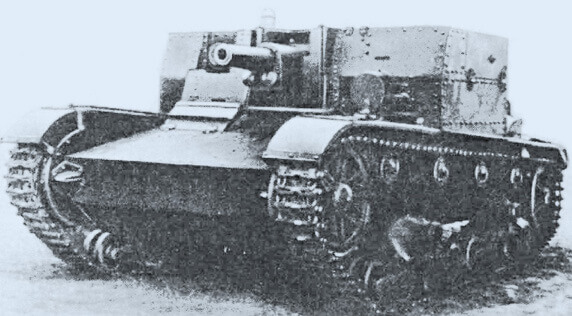
In the spring of 1943, the British Ministry of Defense prepared military operational requirements for an assault tank. According to them, the tank should weigh 45 tons, have 152-mm (6-inch) front armor, and be equipped with a 6-pounder gun. In May, the engineers presented a design for the A.T.1 tank that met all these requirements.
Meanwhile, British military appetites grew, along with the tank’s requirements. As a result, the A.T.1 very soon became obsolete. In the A.T.2 version, the turret was already non-rotational, and the A.T.7 version, which was designed in July, had no turret at all. In place of the turret there was a large cabin with anti-tank guns. The thickness of the front armor increased to 203 mm (8 inch), and the weight was optimistically estimated to be 43 tons. By autumn, the armor thickness increased to 230 mm (9 inch), the weight—to 60 tons, and the armament was a 17-pounder gun.
In February 1944, the A.T.16, equipped with a 94-mm (3.7-inch) gun and weighing 72 tons, was designed. This version was approved and named Heavy Assault Tank A39. An order for 25 vehicles was made. There was a delay in the production process, however, and the order was reduced to 15 vehicles, and then to six. Eventually, only five tanks rolled off the production line, the first one being constructed in only 1947.
British heavy self-propelled gun “Tortoise”
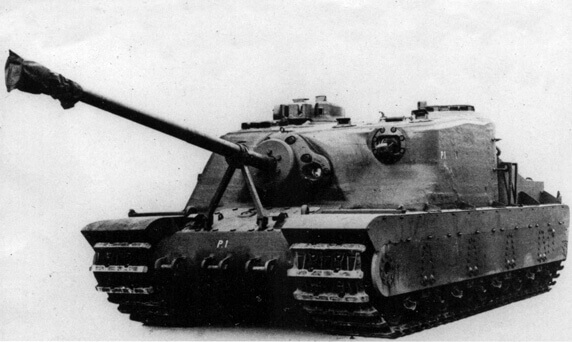
Constantly changing requirements resulted in the construction of a true monster. Due to its grotesque appearance it was named “Tortoise.” The tank weighed 81.3 tons, being the biggest metallic combat vehicle in Britain. Well-armored and well-armed, though very slow and bulky, this assault tank found no use in the British Army.